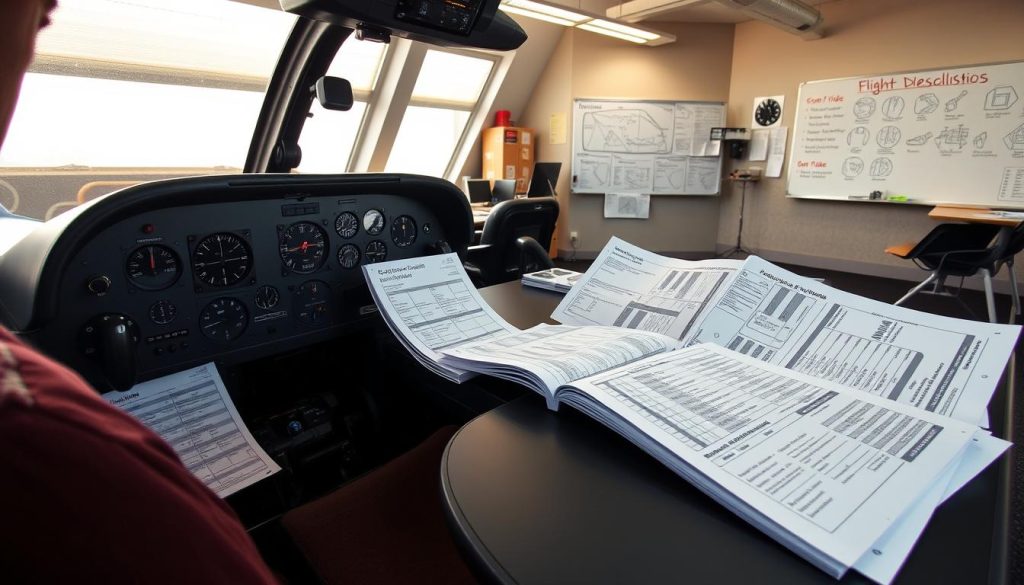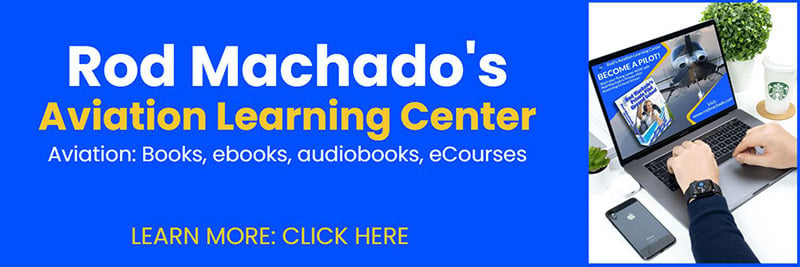Embarking on your aviation journey, understanding how instructors evaluate your readiness for the final checkride is key. This checkride is more than a formality; it’s a crucial milestone in your pilot certification. Flight instructors are pivotal in this assessment, using various methods to gauge your knowledge, skills, and readiness for the flight and oral exams. The preparation process highlights the importance of both flight skills and ground knowledge, essential for success in this evaluative experience.
Instructors conduct thorough assessments, ensuring you’re not just familiar with flying procedures but can apply aeronautical concepts in different scenarios. Continuous feedback during training helps you pinpoint areas for improvement, boosting your chances of success on the checkride and increasing your passing chances1.
Key Takeaways
- The checkride is a pivotal milestone in obtaining your pilot certification.
- Instructors assess your readiness through various evaluation methods, focusing on practical and theoretical knowledge.
- Mock checkrides can improve your performance by providing constructive feedback.
- Ground knowledge and proficiency in flight maneuvers are essential for success on the checkride.
- Preparation using diverse resources increases your chances of passing the checkride.
- Relaxation and taking your time during maneuvers can help avoid errors.
Understanding the Importance of the Checkride
The checkride is a pivotal moment in your path to earning a Private Pilot License. It’s a test of your aviation knowledge and flying competency. It marks the end of your training and shows you meet FAA standards. This ensures you can fly an aircraft safely.
In 2022, 75-80% of flight instructors, commercial pilots, and private pilots passed their first practical exam. This highlights the importance of the checkride for all candidates2. Knowing how critical this evaluation is, you should prepare thoroughly. With enough study and practice, your chances of passing soar, as 99% of success comes from hard work3.
This test doesn’t just check your technical skills. It also looks at your ability to follow strict safety rules and regulations. This is crucial for any pilot. The oral part of the checkride often tests your knowledge in areas like flight calculations, weather management, and aircraft limits. These are all vital parts of the FAA certification process3.
What is a Checkride?
A checkride is a crucial test to confirm a pilot’s readiness for specific licenses or ratings. It includes a practical flight test and an oral exam. These assess skills vital for safe flying. Knowing the checkride definition is key for aspiring pilots aiming for success.
Definition and Purpose of the Checkride
The checkride’s purpose is to ensure you have the required knowledge and skills. For the private pilot checkride, it involves a thorough flight assessment. This includes safety checks and maneuver execution, overseen by a Designated Pilot Examiner (DPE) or an FAA Aviation Safety Inspector. Remember, you must pass it every time you seek to add privileges to your certificate, like upgrading to a commercial license4.
In 2021, 78% of Private Pilot License (PPL) candidates passed their checkrides on the first try5. Preparation is key. Study the Airman Certification Standards (ACS) and practice with mock checkrides to be ready for this critical event.
How long does the Checkride take?
The private pilot checkride typically lasts between 4 to 6 hours in total. It consists of two main parts:
- Oral Examination (1.5 to 3 hours): The examiner will ask questions to assess your knowledge of various topics, including airspace, regulations, flight planning, weather, and aircraft systems.
- Flight Test (1.5 to 2 hours): After the oral exam, you will conduct a flight with the examiner. You’ll demonstrate various maneuvers, navigation, and emergency procedures to show your proficiency and safe handling of the aircraft.
The exact duration can vary depending on a number factors, such as the proclivity of the examiner, complexity of the airspace, complexity of the aircraft being flown, and the applicant’s preparedness. As you advance, preparing for these checkrides is vital for your aviation growth. Schedule your practical test early for thorough preparation and to ensure all documents are ready6.
The Role of Flight Instructors in Assessing Readiness
Flight instructors play a crucial role in determining if a student pilot is ready for their checkride. They assess students based on their deep understanding of FAA standards. This ensures students can perform required maneuvers and possess essential knowledge. Often, they act as designated pilot examiners (DPEs), conducting the checkrides that are vital for a student’s aviation progress7.
Customizing teaching methods to fit each student’s learning style is a key part of the readiness evaluation. This tailored approach helps students learn more effectively, preparing them better for the checkride. Instructors also offer constructive feedback, pointing out areas for improvement7.
Flight instructors emphasize the importance of safety in all flight aspects. They teach ground school lessons on critical aviation topics and guide students through practical flight lessons. These lessons cover piloting, navigation, and emergency procedures. Hands-on experience is vital, allowing students to gain confidence in flying different aircraft under instructor supervision7.
Effective communication with instructors is crucial for a positive learning experience. Instructors simulate checkride scenarios during training, preparing students for the real thing. This ensures they can handle both expected and unexpected challenges. The trust in flight instructors is essential for a student’s progress, creating a partnership towards aviation goals7.
Flight instructors use various assessments, both formal and informal, to measure students’ understanding and skill application. Traditional assessments often involve written tests, while authentic assessments require students to apply their skills in real-world scenarios. A well-designed assessment identifies knowledge gaps and helps instructors adjust their teaching based on common learner difficulties8.
Through these methods, flight instructors offer necessary mentorship during training. They create roadmaps to success and guide students towards their aviation careers. Their influence extends beyond initial training, inspiring ongoing learning and promoting safety in the aviation community7.
Common Assessment Methods Used by Instructors
Instructors use different assessment methods to prepare students for their final checkride. Mock checkrides and oral exam evaluations are key among these. Each method is crucial for enhancing students’ skills and confidence, paving the way for success in the checkride.
Mock Checkrides: The Practice You Need
Mock checkrides are essential in pilot training. They mimic the real checkride environment, helping students get used to procedures and expectations. During these sessions, instructors focus on aviating, navigating, and communication to ensure students grasp flight operations fully9.
These practice sessions also pinpoint areas for improvement. This allows both the instructor and the student to work on knowledge or skill gaps immediately. It’s a hands-on way to refine their abilities.
Oral Exam Evaluations
Oral exam preparation is another vital assessment method. It tests students’ understanding of flight regulations and procedures. This ensures they’re ready for the knowledge part of the checkride. Factors like certification, training, and experience influence their personal weather minimums, which need regular updates10.
This detailed approach boosts students’ preparedness. It also deepens their grasp of essential aviation principles.

Criteria for Determining Checkride Readiness
To be ready for a checkride, you must meet several key criteria. These ensure you can fly an aircraft safely and skillfully. It’s crucial to know and follow flight regulations, show proficiency in maneuvers, and be ready for emergencies.
The FAA has published a comprehensive Airman Certification Standards guide. This is essentially your “cheat sheet” or your “study guide”, for every area of knowledge and every practical flight maneuver you need to demonstrate proficiency and master of, in order to pass your private pilot Checkride.
Knowledge of Flight Regulations
Understanding flight regulations is essential for flying. You need to be familiar with Federal Aviation Regulations (FAR). For example, private pilots must complete a flight review every 24 months. This includes one hour of flight and ground training under FAR 61.5611.
You also must carry your pilot certificate, a government-issued photo ID, and a medical certificate. This is required to use your private pilot privileges, as stated in FAR 61.311.
Proficiency in Required Maneuvers
Being proficient in maneuvers is key. You must consistently perform key maneuvers during practice and the checkride. This includes takeoffs, landings, and navigation tasks12.
Flight instructors often advise adjusting techniques for different environments. They also stress the importance of multitasking and understanding power and pitch nuances13.
Understanding Emergency Procedures
Being prepared for emergencies is crucial. You must understand emergency protocols and be able to execute them during the flight test. Oral exams often focus on this area, testing your emergency response skills12.
Practicing these procedures, even outside the aircraft, is essential. It helps develop the skills needed for unexpected situations13.
The Role of Mock Checkrides in Pilot Preparation
Mock checkrides are crucial in your path to becoming a skilled pilot. They mimic real checkride scenarios, offering a structured way to prepare. This preparation is key to your success.
Benefits of Conducting Mock Checkrides
Mock checkrides offer numerous advantages. They are essential for evaluating your performance and pinpointing areas for improvement14. By simulating the high-pressure environment of a real checkride, they help you get accustomed to the stress14. It’s advised to have regular mock checkrides to consistently assess and practice your skills15.
Building Confidence and Familiarity
Passing mock checkrides greatly increases your confidence14. You become more familiar with the aircraft’s controls and instruments, especially if it’s the same type for the real checkride14. The feedback from these sessions lets you review your performance and work on weak spots14. Following the Practical Test Standards (PTS) during mock checkrides ensures a precise evaluation15. Preparing for written tests and practicing oral exams on topics like airspace and emergency procedures boosts your readiness.14
Assessing Knowledge and Skills Through Practice
To master aviation, a deep understanding of both ground school and practical flying is essential. Ground school knowledge helps you apply theoretical concepts in real flight scenarios. The FAA Private Pilot Airplane Knowledge Test has 60 questions and a 2-hour time limit, requiring a 70% minimum score to pass16. You must study aviation knowledge in areas like regulations, navigation, aerodynamics, and emergency procedures17.
Importance of Ground School Knowledge
Ground school lays the foundation for aspiring pilots. It covers aerodynamics and aircraft systems, crucial for flight understanding. Mastering these subjects prepares you for practical tests, ensuring a full grasp of flying. Studying with your flight instructor or through home-study courses familiarizes you with FAA regulations and advisory circulars essential for success in practical flying.
Practical Flying Experience and Proficiencies
Practical flying applies the knowledge from ground school. You need at least 40 hours of flight time for a Private Pilot Certificate, making this training invaluable16. Taking multiple practice exams prepares you for the FAA Knowledge Test and improves your flight skills through real-world applications18. Effective study methods, like practice quizzes and flight maneuvers, boost your confidence and proficiency for successful checkrides.
Flight Maneuvers Assessment Techniques
Effective checkride preparation requires mastering various flight maneuvers. These are crucial for demonstrating your aviation skills. Instructors closely assess these maneuvers to ensure you meet performance standards. Familiarity with key maneuvers like takeoffs, landings, and emergency procedures is essential for success.
Key Maneuvers to Master for the Checkride
To excel in your checkride, focus on the following key flight maneuvers:
- Takeoffs: Ensure smooth and efficient departures.
- Landings: Practice various landing techniques, including normal, short field, and soft field.
- Emergency Procedures: Cultivate a solid understanding of the protocols to follow during unexpected situations.
Consistency and Performance Standards
Instructors stress the importance of consistency in flight maneuvers. The Gleim Private Pilot Flight Maneuvers and Practical Test Prep book outlines critical training topics19. These include preflight preparations, airport operations, and basic flight maneuvers. Adhering to performance standards ensures seamless execution of maneuvers.
Understanding these standards is key to successful checkride outcomes. The FAA Airman Certification Standards are also crucial for shaping your certification requirements19.

This systematic approach enhances your flying skills and prepares you for the checkride. Consistent practice boosts your confidence in performing essential maneuvers. This confidence is a significant contributor to your overall preparedness.
Emergency Procedure Knowledge as an Evaluation Tool
Your grasp of emergency procedures is crucial in the pilot evaluation process. During a checkride, examiners scrutinize your emergency response skills. These skills can be the difference between success and failure. They demonstrate your capability to manage in-flight emergencies, essential for safe and effective piloting.
Understanding procedures like engine failure response, stall recovery, and emergency landing techniques is key. These skills greatly impact the examiner’s view of your readiness. With the advent of new Practical Test Standards (PTS), your ability to make decisions under pressure will be closely examined20.
The practical exam includes an oral evaluation and a flight evaluation. This allows you to show your emergency procedures knowledge in action21. You’ll be asked about mitigating risks in various scenarios. For example, using risk assessment tools like the PAVE checklist and “I’M SAFE” checklist is vital for evaluating your preparation before and during flights.
During the flight, practical demonstrations will test your emergency response skills. You’ll need to prioritize tasks and complete checklists quickly in urgent situations. As you prepare for your checkride, improving these skills ensures you’re not just ready to pass the exam. You’ll also be prepared to face real-world flying challenges effectively.
Getting familiar with the required knowledge and practicing scenario-based training boosts your confidence. This readiness is essential for handling any unexpected situations in flight preparedness is key. By mastering these emergency procedures, you set yourself up for success in becoming a proficient pilot.
Remember, thorough preparation not only helps you pass evaluations but also enhances overall safety during your flying career.
Assessing Decision-Making Skills in Real-Time Situations
In aviation, decision-making skills are vital for pilots, especially during high-stakes environments like checkrides. Instructors evaluate how you handle challenges, assess risks, and make informed decisions while flying. The ability to assess these skills in real-time is crucial, showing your situational awareness and composure under pressure. Research shows that improving pilot decision-making is a priority, mandated by the Federal Aviation Administration (FAA) regulations22.
Assessment methods include both traditional and authentic approaches. Traditional assessments focus on written tests of rote knowledge. In contrast, authentic assessments require demonstrating application through real-world tasks8. The 5P model is now a key tool in training, helping you manage personal attitudes, recognize hazards, and evaluate your aeronautical decision-making (ADM) skills during flight operations22.
Scenario-Based Training (SBT) enhances your decision-making abilities by simulating realistic flight environments. As you face various scenarios in training, your judgment improves significantly. Studies show that pilots who undergo decision-making training make fewer errors22. This combination of structured frameworks and realistic training prepares you for aviation’s complexities, ensuring readiness in critical moments.
Utilizing FAA Practical Test Standards in Assessments
Instructors are key in determining student readiness for their checkride. They conduct thorough evaluations based on FAA guidelines. This includes reviewing the pilot logbook, a critical part of readiness assessments23. Students must also provide documents like the FAA Form 8710-1, medical certificate, and graduation certificate from an FAA-approved school23. The practical test guidelines are detailed in the Recreational Pilot or Private Pilot Practical Test Standards books. These books offer a standardized framework for checkride assessment24.
The practical test can start when your instructor believes you’re ready. This reflects their written recommendations for the test application23. Testing can occur at FAA Flight Standards District Offices or with FAA-designated pilot examiners. This affects the overall costs of the checkride23. These standards are crucial as they outline the required areas of operation. They ensure pilots demonstrate competency in all necessary skills24.
Understanding practical test standards enhances a pilot’s ability to succeed during the checkride. It also builds confidence through structured preparation. With updated tasks and expectations, such as navigation revisions and emergency procedures25, students become more adept at handling real-world scenarios. Every instructor references these standards to give you the best chance at flying successfully and attaining your certificate.
The Importance of Continuous Feedback and Training
In aviation, continuous feedback is key to your training. Instructors give consistent, constructive feedback, helping you see where you need to improve. They also adjust their training to meet your individual needs, making you more ready for the checkride.
How Instructors Provide Constructive Critique
Instructors not only praise your strengths but also pinpoint your weaknesses. This feedback loop keeps you informed as you train. They use real-time assessments and simulations to give you valuable insights. Their focus on continuous feedback promotes significant growth and learning.
Adapting Training Approaches for Students
Every pilot learns differently, making training adaptation crucial. Instructors look at your unique learning style and challenges, tailoring their teaching. This personalized approach creates a more effective learning environment. By offering tailored feedback and adjustments, instructors prepare you for the checkride’s challenges.
Preparing for the Final Checkride
As you near your final checkride, instructor review sessions are key to solidifying your skills. These sessions, lasting between one and a half to two hours, delve into critical concepts and essential maneuvers. They are designed to boost your understanding and readiness for the practical test2627,). Mock exams during training offer real-time feedback, enhancing your confidence.
Final Review Sessions with Your Instructor
Your instructor will lead a structured review, focusing on areas for improvement. This ensures you grasp all requirements clearly. It’s a collaborative space for open communication, allowing you to clarify doubts. It’s not just about knowledge but also about self-assessment to gauge your readiness accurately.
Self-Assessment Techniques for Readiness
Using self-assessment techniques alongside instructor guidance boosts your confidence. Consider chair flying or a home flight simulator to practice. These methods help you evaluate your skills independently and make adjustments. With a solid plan, you’ll approach the test with confidence and competence, ensuring a strong performance2627,).
FAQ
How do instructors assess readiness for the final checkride?
What is the significance of the checkride in flight training?
What types of checkrides are included in pilot training?
What role do flight instructors play in evaluating student readiness?
What common assessment methods do instructors use for checkride preparation?
What are the key criteria for determining checkride readiness?
How do mock checkrides benefit students during pilot preparation?
Why is ground school knowledge important for checkride preparation?
What key maneuvers should students master for the checkride?
How do instructors assess students’ emergency procedure knowledge?
How is decision-making assessed during the checkride?
What are FAA Practical Test Standards?
How does continuous feedback from instructors enhance student readiness?
What should candidates do to prepare for the final checkride?
Source Links
- Pass Your Private Pilot Checkride With Flying Colors – https://www.pilotmall.com/blogs/news/pass-your-private-pilot-checkride-with-flying-colors?srsltid=AfmBOopMRxHZrUaB_KPz2rmpdA7h9a6Paqqhn1aveCxsahvQLYpFV47f
- Guide to Checkrides | Phoenix East Aviation – https://pea.com/blog/guide-to-checkrides/
- What Happens During Your Private Pilot Checkride? – CAU – https://calaero.edu/become-a-pilot/private-pilots/what-private-pilot-checkride/
- What Is a Checkride for Pilots? The FAA Practical Exam – https://leopardaviation.com/checkride-pilots/
- Checkrides – https://epicflightacademy.com/checkrides/
- Do Your Checkride – https://www.aopa.org/training-and-safety/learn-to-fly/flying-for-fun/take-your-check-ride
- The Role of Flight Instructors in Your Journey – AV8Prep – https://www.av8prep.com/aviation-library/pilot-training/the-role-of-flight-instructors-in-your-journey
- AIH Chapter 6: Assessment – https://www.faa.gov/sites/faa.gov/files/regulations_policies/handbooks_manuals/aviation/aviation_instructors_handbook/08_aih_chapter_6.pdf
- Flight Instructor Techniques – https://www.cfinotebook.net/lesson-plans/fundamentals-of-instructing/flight-instructor-techniques.php
- I own 3 cars – https://www.faasafety.gov/files/gslac/library/documents/2006/Oct/6767/Personal and Wx Risk Assessment Guide V1.0.pdf
- 10 Regulations To Know Before Your Private Pilot Checkride – https://www.boldmethod.com/blog/lists/2024/05/ten-faa-regs-to-know-before-your-checkride/
- Practical Checkride and Certification Process – AV8Prep – https://www.av8prep.com/aviation-library/pilot-training/practical-checkride-and-certification-process
- Are You Ready for Your Checkride? – https://www.redbirdflight.com/landing/checkride-readiness
- Mock Checkrides and Preparing for the Private Pilot Checkride – AV8Prep – https://www.av8prep.com/aviation-library/pilot-training/mock-checkrides-and-preparing-for-the-private-pilot-checkride
- Performing Practical Scenarios with Mock Checkrides – AV8Prep – https://www.av8prep.com/aviation-library/pilot-training/performing-practical-scenarios-with-mock-checkrides
- Private Pilot Airplane – https://flightapprentice.com/courses/private-pilot-ground-school/
- Getting Ready for the FAA Knowledge Test for Private Pilots – AV8Prep – https://www.av8prep.com/aviation-library/pilot-training/getting-ready-for-the-faa-knowledge-test-for-private-pilots
- FAA Written Tests: #1 Ultimate Best Pilot Study Tips – https://www.flightschoolusa.com/faa-written-tests-1-ultimate-pilot-tips/
- Private Flight Maneuvers – Gleim Aviation – https://www.gleimaviation.com/shop/ppfm/
- SBT For the Traditional Flight School – https://www.faasafety.gov/files/gslac/library/documents/2007/Sep/19529/Introduction to Scenario-Based Training.pdf
- Types of Pilot Tests – What Tests Do You Take to Become a Pilot? – https://atpflightschool.com/become-a-pilot/flight-training/types-of-pilot-tests.html
- Aeronautical Decision Making (ADM) – https://www.cfinotebook.net/notebook/aeromedical-and-human-factors/aeronautical-decision-making.php
- Recreational Pilot and Private Pilot Practical Tests – https://www.faa.gov/pilots/become/practical
- FAA-S-8081-14A, Private Pilot Practical Test Standards for Airplane – https://download.aopa.org/epilot/2007/pts-pvta.pdf
- Private Pilot Practical Test Standards for Lighter-Than-Air Category (FAA-S-8081-17A) – https://www.faa.gov/training_testing/testing/acs/private_lta_pts_17.pdf
- How to Prepare for Your FAA Checkride – Thrust Flight – https://www.thrustflight.com/prepare-for-faa-checkride/
- How to Pass Your Private Pilot Checkride – Pilot Institute – https://pilotinstitute.com/how-to-prepare-for-a-checkride/




